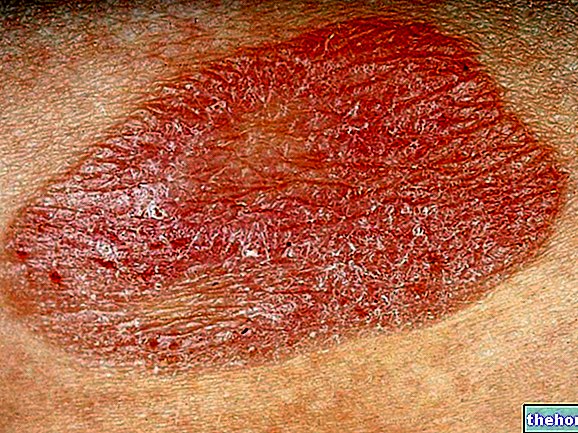Generality
Dysplasia is the term with which doctors indicate a "qualitative, morphological and, sometimes, quantitative, alteration of the cellular structure of a tissue, generally of an epithelial type.
A dysplastic tissue - that is, a tissue affected by a dysplasia event - is a set of cells with numerous variations from normal; these cells, in fact, have irregularities in shape, size, chromatin properties and arrangement within the tissue itself.
Although they have some characteristics in common, dysplastic events and neoplastic events are two different situations: unlike cancer cells, dysplastic cells can still return to normal.
There are three degrees of dysplasia: mild, moderate and severe.

What is dysplasia?
Dysplasia is the medical-oncological term that indicates a qualitative, morphological and, sometimes, quantitative variation of the cellular structure of a tissue, usually of the epithelial type.
Dysplastic cells - that is, the cells that are the protagonists of a dysplasia event - are cells that have taken on different characteristics, compared to their healthy counterparts.
If for example the cells of a healthy epithelial tissue show a precise regularity in the size, in the chromatin properties and in the organizational scheme that underlies the tissue architecture, the cells of a dysplastic epithelial tissue show dimensional alterations, morphological irregularities, voluminous nuclei and hyperchromatic and an evident disorganization at the level of the tissue architecture.
Example of architectural upheaval, induced by a dysplasia event
Normal epithelial tissue is the result of a series of overlapping layers of cells.
Under the microscope, these cells appear tall, in the lower layers, and more and more flattened as one proceeds towards the superficial layers.
In an epithelial tissue affected by a dysplasia process, the lower cell layers may have flattened cells, instead of the characteristic high cells; conversely, the more superficial cell layers may have tall cells instead of flattened ones.
DOES DYSPLASIA MEAN NEOPLASIA?
Contrary to what many believe, dysplasia is not a synonym for neoplasia and its presence does not necessarily mean the presence of a tumor, be it benign or malignant.
Dysplastic cells have morphological and qualitative characteristics similar to neoplastic cells, but unlike the latter, they have the possibility of returning to normal.
In other words, while the neoplastic process is an irreversible process (once formed, the cells of a benign or malignant tumor remain so), the dysplastic process is a potentially reversible process (provided that the triggering cause is eliminated).
The confusion between dysplasia and neoplasia - usually malignant neoplasm - derives from the fact that, in some cases (not always!), The dysplasia of a tissue represents the prelude to the formation of a malignant tumor.
Causes
The phenomena of dysplasia are, in general, the consequence of a "repetitive exposure to inflammatory / irritative agents of a physical type (for example solar radiation), chemical (for example aromatic hydrocarbons) or biological (for example viruses).
Features
From a microscopic point of view, the most significant changes that characterize dysplasia are four:
- Anisocytosis: a specialized term that indicates the presence of cells of different sizes.
- Poikilocytosis: a specialized term that indicates the presence of irregularly shaped or deformed cells.
- Hyperchromatism: specialist term that indicates the ability of cell nuclei to stain more intensely, following the presence of a thickening of chromatin.
- Increased number of mitotic figures: this means that there is an abnormal number of cells.
In dysplasia, cell division occurs on a regular basis.
Classification
Doctors and histologists classify dysplasia based on the density of dysplastic cells in a tissue. The density of dysplastic cells in a tissue is a characteristic called grade.
Depending on the degree, dysplasia can be:
- Mild (mild dysplasia). It is mild when the density of dysplastic cells in a tissue is low.
Brief description of the features: the epithelium retains the normal series of cell layers (normal stratification), but the cells of the lower layers (basal cells) are altered in number and have a bulky and hyperchromatic nucleus. - Moderate (moderate dysplasia). It is moderate when the density of dysplastic cells in a tissue is fair.
Brief description of the features: the alterations mentioned in the previous point are more marked (the stratification has more variations, etc.), but they cannot be defined as serious. - Severe (severe dysplasia). It is severe when the density of dysplastic cells in a tissue is high.
Brief description of the features: the stratification of the epithelium shows profound alterations and the cells have an extremely voluminous, hyperchromatic and irregular nucleus.
If in the case of mild dysplasia the dysplastic process is still at an early stage, in the case of severe dysplasia the dysplastic process is at a very advanced stage.
Com "is easily understood (also from what has just been stated), of the three degrees of dysplasia the one with the greatest tendency to transform into a malignant neoplasm is the severe degree.









.jpg)


















